Some Birds with Yellow and Black Feathers
Presenting Scott's Orioles and Yellow-rumped Warblers
A morning visit to the Ash Canyon Bird Sanctuary last week was refreshing. Although it was very windy, many birds were present and active at the feeders there. A few brilliant Scott's Orioles were around. Compared to many other birds in the area whose plumage matches the desert's colors, the male Scott's Oriole is a stunning combination of lemon-yellow and dark black.
The female Scott's Oriole's plumage is much more subdued than the males. She is a dull yellow below and light gray feathers above. The female will have two white wing-bars similar to the male's. Both birds have an long,straight bill with a signature blue tint to the base of the lower bill.
Scott's Orioles appear in southern Arizona during the summer months as the range map below indicates.
In their US range, Scott's Orioles inhabit anywhere from high deserts to adjacent mountain slopes. They are closely associated with yucca plants.
That morning we did not hear the Scott's Orioles singing. It's likely they were not at their home territories but had come down to Ash Canyon just to feed. Perhaps when back on their territories, we could hear their songs.
Another similarly colored bird we saw was also wearing fresh breeding plumage. There were many male Yellow-rumped Warblers present. In southern Arizona, we first see these birds in large numbers during the fall and winter, when their colors are more subdued. Now, with spring breeding season here, AllAboutBirds.org describes them as " a dazzling mix of bright yellow, charcoal gray and black, and bold white.
The Yellow-rumped Warblers with the yellow "chin" are one type of 'Yellow-rumps' that we see here. A Tucson Bird Alliance article shares how the very similar but white throated version is a different species. We did not see any of those birds that morning.
Even though none of my current photos show the yellow rumps of these birds, trust me to know that they have a very bright yellow rump. That has given these birds the nickname of "butter-butts". You can't see that in today's photos, but they do have very shiny looking rump feathers. A previous post of mine does show a photo with that feature.
It was interesting that we didn't see any female Yellow-rumped Warblers that morning. As expected, they are a duller gray with much less yellow. The males were plentiful and colorful enough for us.
Yellow-rumps are the most abundant wintering warblers in Arizona. During the winter, many of the local birds come down to desert areas. Being warblers, their common food is insects and these birds flit around constantly in search of food.
Ash Canyon Bird Sanctuary is always a great place to sit and observe birds. It was a little early to see any migrating or summering hummingbirds, so I'll have to return next month sometime.
On another note, our team's Birdathon this past Monday went very well. We saw 52 species and had a nice morning birding. I'll have a report for my next email!!


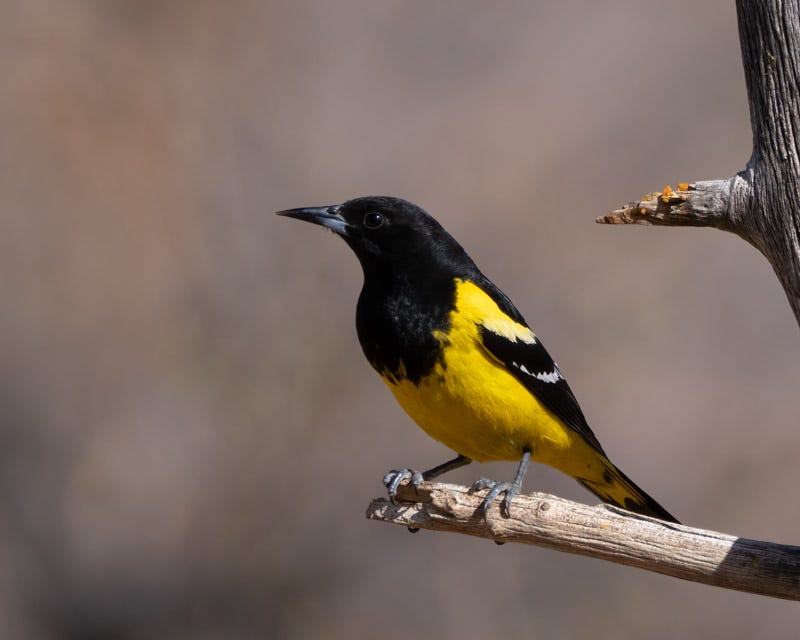
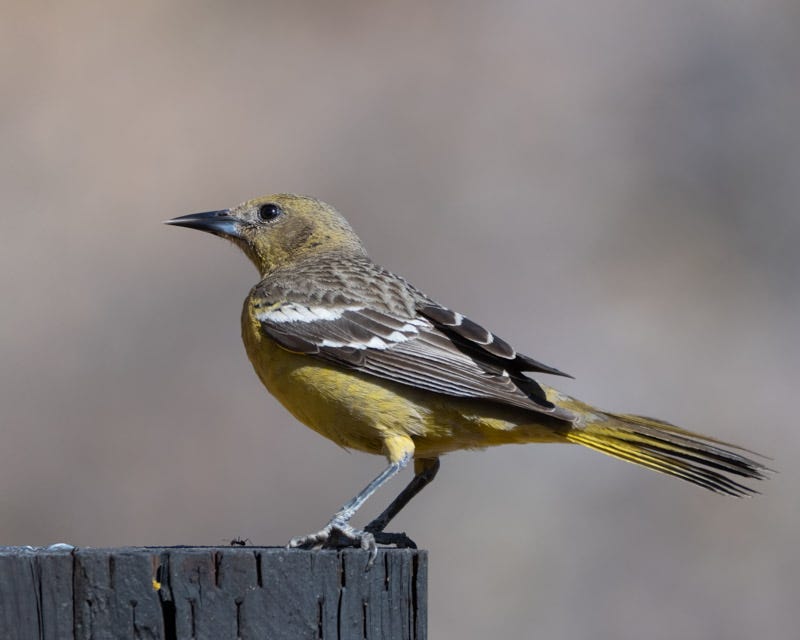

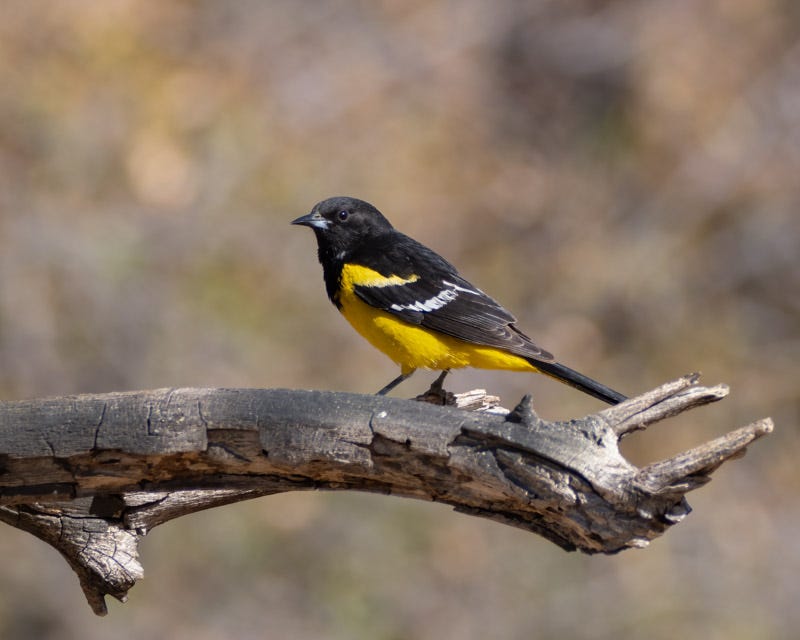
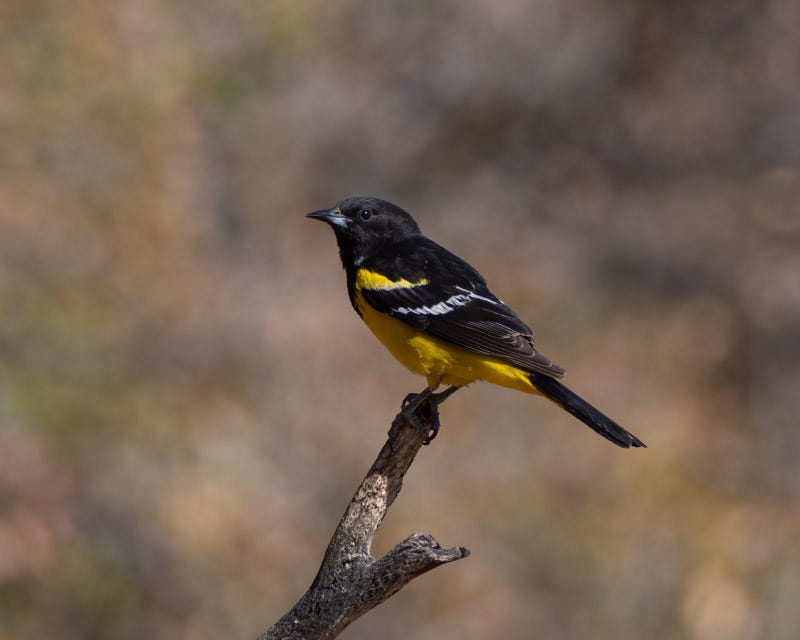
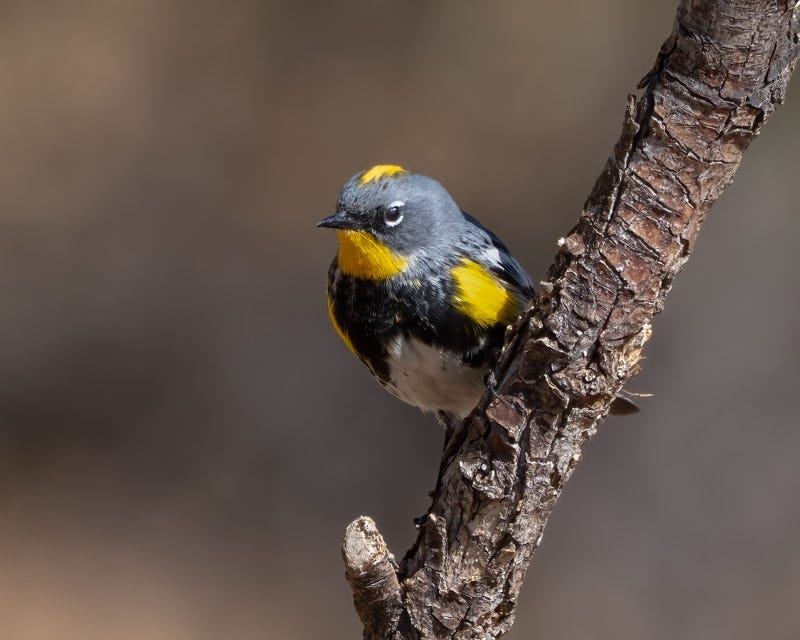
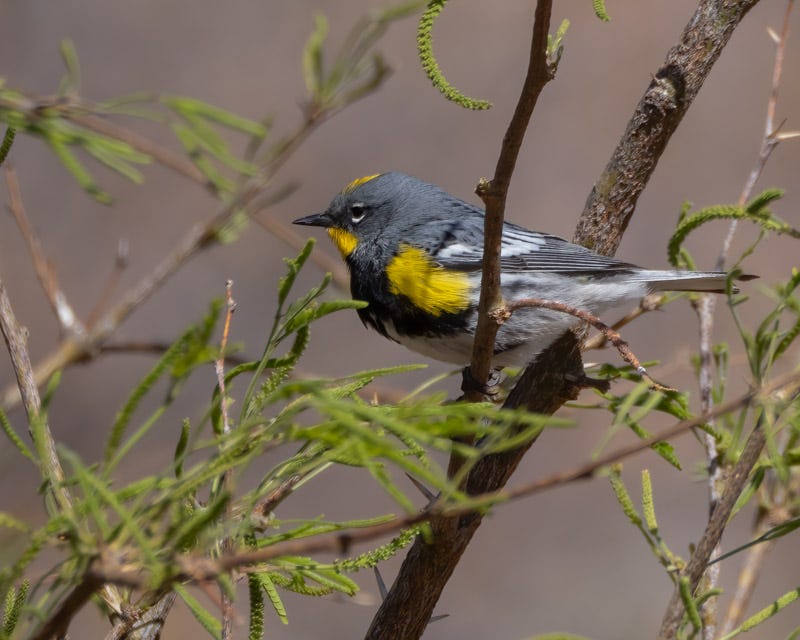
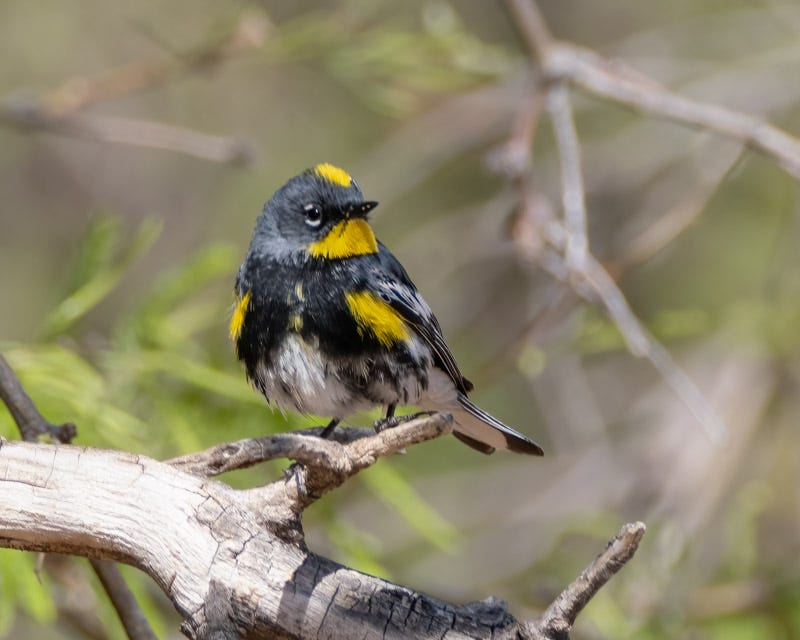
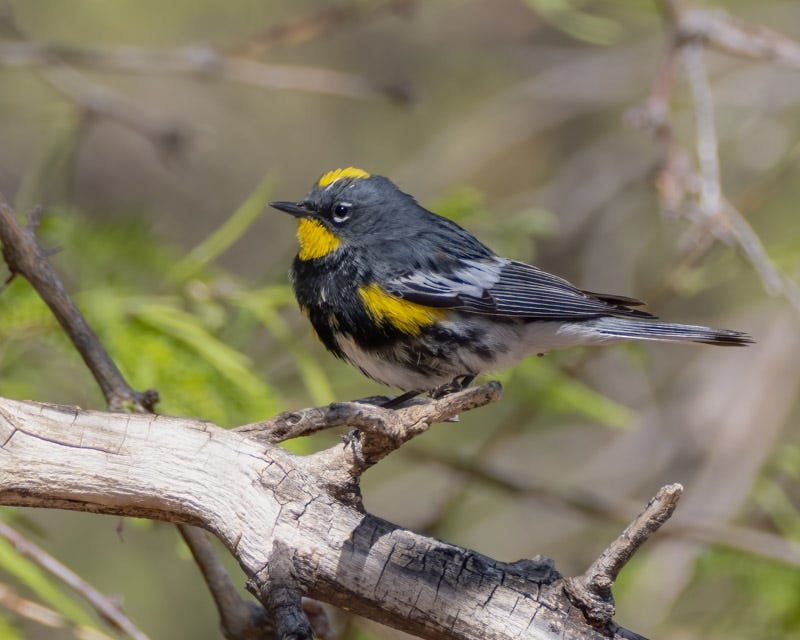
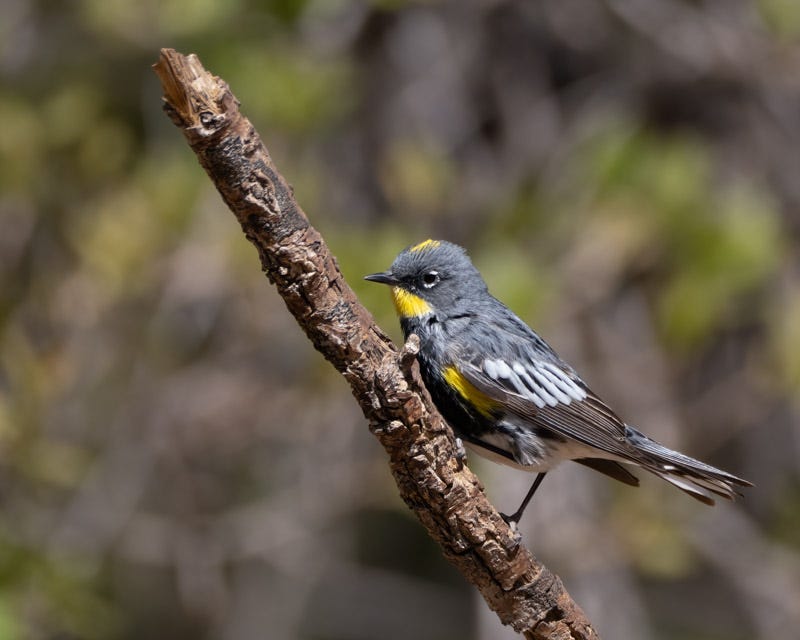
Handsome little devils!
We are waiting for our orioles to return. It has been a very cold and wet Spring in Wisconsin.